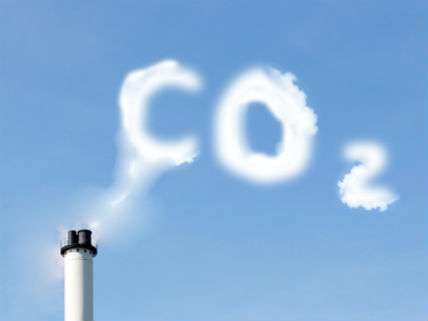New Nano-Catalyst Reverses Combustion to Turn Carbon Dioxide into Fuel
Would it be worth doing in the absence of a carbon tax or a cap-and-trade market?

Researchers at Oak Ridge National Laboratory are reporting that they have devised a catalyst using common elements like copper and carbon that can convert carbon dioxide dissolved in water directly into ethanol at room temperature. The researchers suggest that the reaction can be scaled up to process large quantities of the greenhouse gas into fuel. One idea is that excess electricity from renewable sources like wind and solar power could be used to produce ethanol that could later be burned to supply energy when the sky is cloudy and the wind is slack. In addition, the reaction could produce transport fuel from the emissions of fossil-fuel powerplants.
From the ORNL press release:
With the help of the nanotechnology-based catalyst which contains multiple reaction sites, the solution of carbon dioxide dissolved in water turned into ethanol with a yield of 63 percent. Typically, this type of electrochemical reaction results in a mix of several different products in small amounts.
"We're taking carbon dioxide, a waste product of combustion, and we're pushing that combustion reaction backwards with very high selectivity to a useful fuel,"[lead author Adam] Rondinone said. "Ethanol was a surprise -- it's extremely difficult to go straight from carbon dioxide to ethanol with a single catalyst."
The catalyst's novelty lies in its nanoscale structure, consisting of copper nanoparticles embedded in carbon spikes. …
The researchers' initial analysis suggests that the spiky textured surface of the catalysts provides ample reactive sites to facilitate the carbon dioxide-to-ethanol conversion.
"They are like 50-nanometer lightning rods that concentrate electrochemical reactivity at the tip of the spike," Rondinone said.
They do not speculate on whether it would be worth it to use this reaction in the absence of restrictions - a tax or a cap-and-trade market - on carbon dioxide emissions.


Show Comments (147)